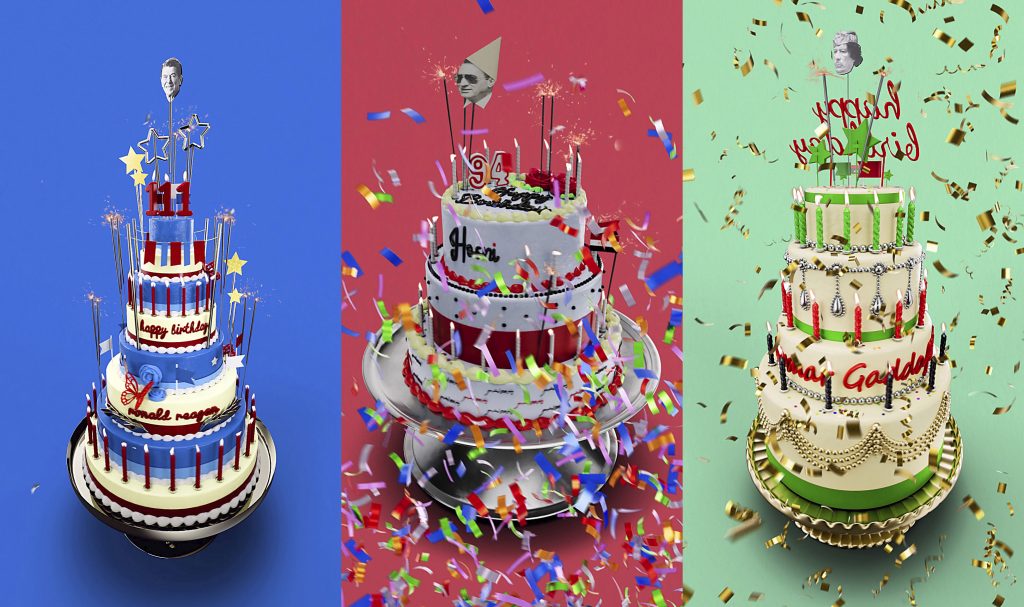NFTs
Launched by Art-World Insiders, the New NFT Platform Artwrld Is Trying to Corner the Market Where Traditional and Crypto Art Meet
Artwrld was co-founded by curator Nato Thompson, artist Walid Raad, and designer Josh Goldblum.

Artwrld was co-founded by curator Nato Thompson, artist Walid Raad, and designer Josh Goldblum.

Taylor Dafoe

If the mention of NFTs elicits eye rolls in the contemporary art world, it’s almost always for one particular reason: substance. Even if it’s a generalization or a stereotype, crypto-art has a reputation for lacking rigor and depth.
Signing onto the chat is Artwrld, a new NFT platform that aims to bridge the gap between these two fields by bringing established contemporary artists into the digital space. Among its founders are Nato Thompson, the former artistic director at Philadelphia Contemporary and chief curator at Creative Time, and Josh Goldblum, the CEO of Bluecadet design agency.
Rather than a quick way to cash in on a fad, Goldblum pitches Artwrld as a place where visionary contemporary artists can explore the creative possibilities of NFTs. “We think that some of the most interesting, visionary artists—the artists that have the most to contribute to this space, who are doing work that’s incredibly relevant to this space—don’t have an easy way to onboard beyond tokenizing a preexisting work,” he said in an interview with Artnet News.
So far, the pitch to seems to be working. The initial lineup of artists who have also signed on to make their first-ever NFT artworks on the platform is impressive, including Yael Bartana, Mel Chin, Jill Magid, Shirin Neshat, and Ahmet Öğüt.
“These are artists with whom you have to have a lot of conversations,” said Thompson, who also serves as Artwrld’s creative director. “They don’t just say ‘yes.’ They go deep.”
? we’re Artwrld, an organization dedicated to working with world-class artists to produce compelling NFT-based projects that benefit the nonprofits they love.
????? ???? ?????? ???? https://t.co/CijTMQ6vOa
— artwrld (@artw__rld) February 22, 2022
First up is a project by Artwrld’s third co-founder, artist Walid Raad. Called Festival of Gratitude, the project comprises a series of computer-generated birthday cakes for global dictators, sheikhs, presidents, and other 20th-century rulers. It’s set to be released in May, coinciding with Frieze New York, with a portion of the sale’s proceeds will go to ArteEast, a New York-based non-profit that supports Middle Eastern artists and arts organizations.
Goldblum said that Raad’s participation had “helped us work through the question of how to make [the platform] artist-forward.”
Artwrld will commission established artists to make new, one-of-kind digital artworks for its platform. They’ll be released in “drops,” some containing thousands of unique NFTs, others—the more exclusive examples—just a few. Pricing will vary from project to project too, but the founders said that in almost all cases, NFTs will cost less than what a physical artwork by the same artist would go for on the market.
Fifty percent of profits will go to the NFT’s creator, 40 percent to Artwrld. The remaining 10 percent, meanwhile, will be put toward a charity of the artist’s choice. In the case of secondary sales, seven percent will go to the artist, five to the company, and three percent will head to the nonprofit.
Drawing thematic similarities between the bounty of prestigious artists who have signed up so far would be difficult, except to say that they share a pension for the conceptual, the political, and the intellectual. Their work, in other words, never lacks substance.
???? ???????
⚆ Yael Bartana
⚆ Mel Chin
⚆ Caledonia Curry / Swoon (@swoon)
⚆ Jill Magid (@jillmagid)
⚆ Jennifer McCoy & Kevin McCoy (@mccoyspace)
⚆ Shirin Neshat
⚆ Paul Pfeiffer
⚆ Walid Raad
⚆ Duke Riley
⚆ Apichatpong Weerasethakul (@kickthemachine) pic.twitter.com/ezoZFJgVP5— artwrld (@artw__rld) February 23, 2022
Thompson pointed specifically to Magid, a heady conceptualist whose own artworks often take years to make and can be hard to define. “Jill’s always been interested in economic exchange, exchanges of power, surveillance—these are the fundamental questions that are germane to the space,” said Thompson.
Details about what Magid or any other artists have planned were not shared. The promise, however, is to be more than a place to sell jpgs.
“We really have no interest in just taking people’s artwork and dumping it into a marketplace without any context, or monetizing something that was created for a different format,” Goldblum added. “We want to create work that really takes advantage of what Web3 can do.”
Despite Artwrld’s rigorous approach, the NFT marketplace remains crowded. When asked about the increasingly crowded field of NFT platforms—especially those, like Particle, Pace Verso, and ArtOfficial, that are trying to tap into the contemporary art market—Thompson said, “We’re excited to have other people in the space! More people getting used to a MetaMask wallet, more people understanding that NFTs are great opportunities for artists that are respectable, is not a problem for us.”
“We think leading with really incredible, intelligent, thoughtful projects, doesn’t just help our artists and art world,” he added. “It also helps the emerging field that is the digital art landscape.”